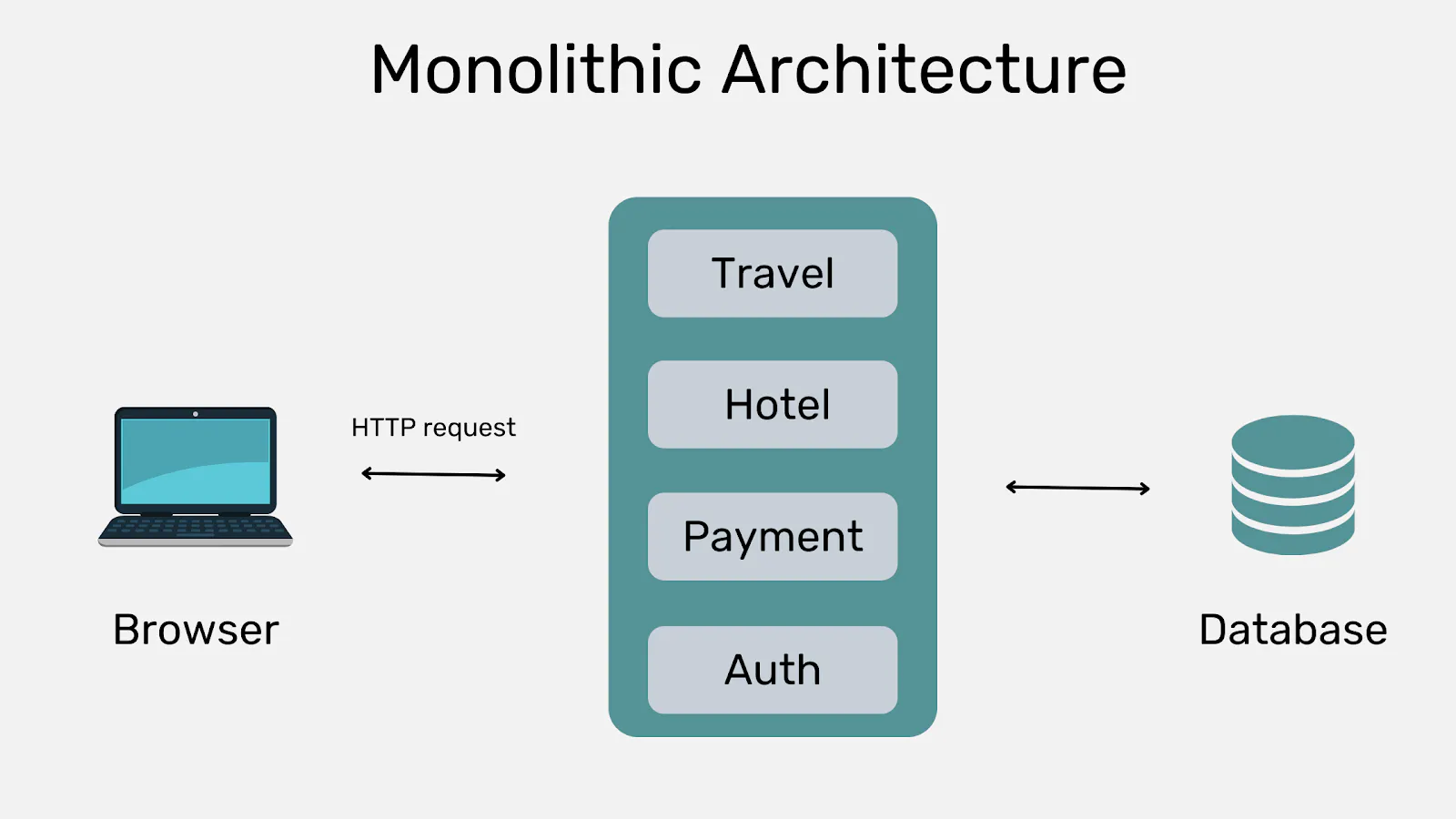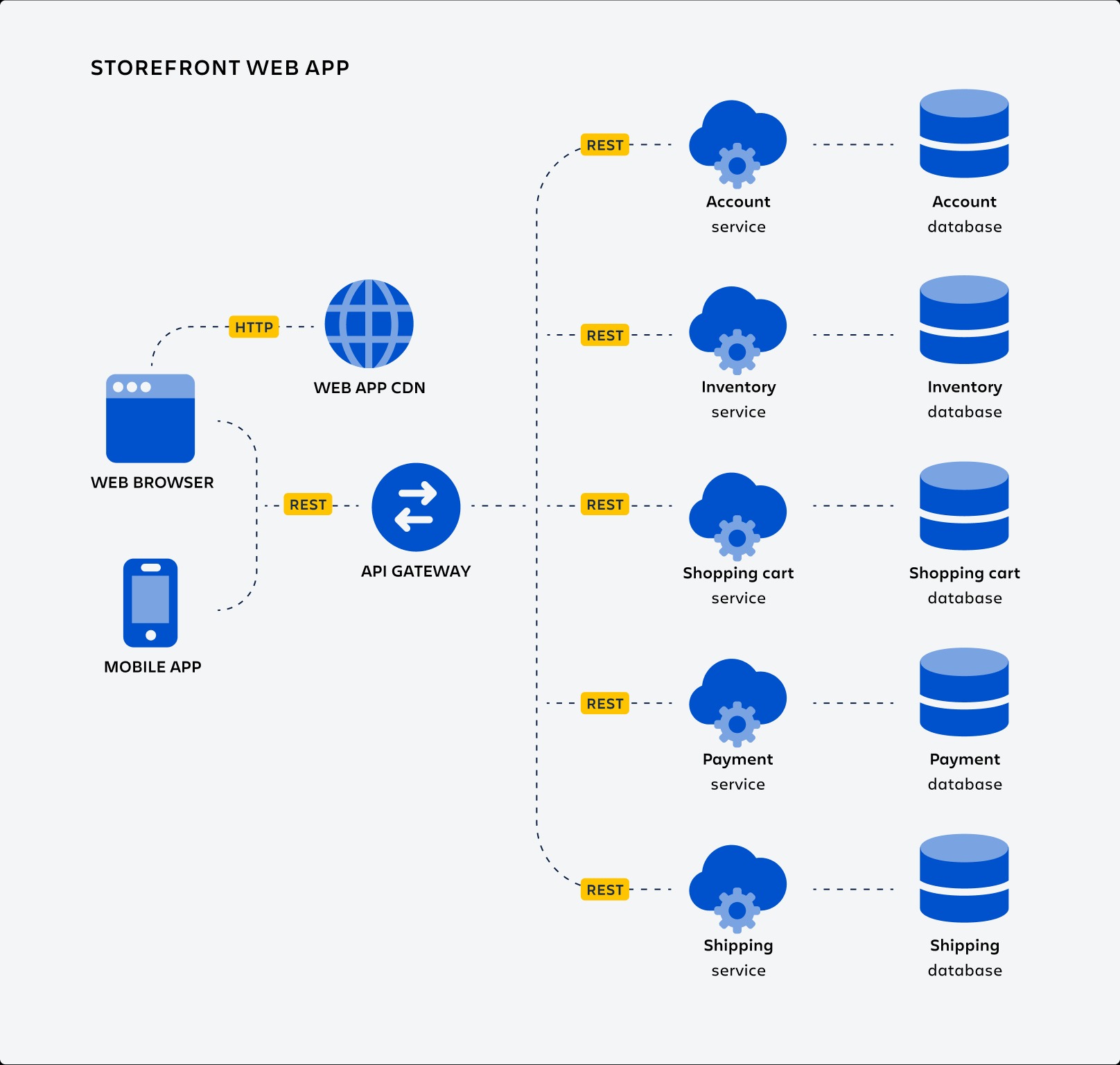Monolithic vs Microservices Architecture: Key Differences
Explore key differences between monolithic and microservices architectures to understand how each approach impacts development, scalability, and performance.
Join the DZone community and get the full member experience.
Join For FreeArchitecture design is imperative to modern software development. It impacts application performance, development time, quality, and overall user experience. Monolithic and microservices are two popular architectural designs powering most software applications today.
Monolithic design is a more traditional approach that treats the entire application as a single entity. On the other hand, microservices are a more modern approach that divides the application into smaller components, giving developers granular control. For most developers, currently, microservices stand out as the best approach since they are a novel concept and provide finer control. However, this is not necessarily true in all cases.
This article will discuss the monolithic vs microservices architectural design approaches in detail and highlight scenarios where either is desirable.
Table of Contents
- What is monolithic architecture
- What is microservices architecture
- Key differences between monolithic vs microservices architecture
- Monolithic vs microservices architecture: How to choose
- Conclusion
What Is Monolithic Architecture?
Monolithic architecture is the conventional method in application development. A single codebase contains all logic, workflows, and databases. This architecture treats the entire application as a single unit, with all components tightly coupled.
To illustrate what monolithic architecture entails, consider a large machine with several cogs and gears working simultaneously. If a single gear breaks, the entire machine stops, and if a single component is to be replaced, all gears must be halted.

Pros
- Easier development and deployment: Since the entire logic is all in one place, it is easier to understand and extend, especially for small applications. A single application also means fewer individual components and easier deployment.
- Easier testing and debugging: Test cases are simpler to implement due to a unified architecture and a single executable file. Bugs are also generally easier to locate and fix.
Cons
- Difficult to scale: Maintaining a growing codebase becomes exponentially challenging in monolithic applications. Since all modules are tightly coupled, any updates to a single component will require updating the entire application code.
- Slower development: A monolithic architecture usually does not allow for parallel development since the ripple effects impact multiple modules. The growing application complexity also means that bugs become challenging to fix over time.
- Technology bound: Monolithic apps are usually built on a single programming language, so their technology adaptation is limited. They are strictly linked to their initial design, and new database architecture or development frameworks outside the language cannot be included in the application.
What Is Microservices Architecture?
Microservices architecture improves upon monolithic design by introducing modularity to the application. It divides the application into smaller chunks called microservices, each developed and operating independently of the other.
The architecture design in Microservices is such that each module handles a different functionality. One might be hosting databases and responsible for CRUD operations, while another might process Frontend forms. Each module is loosely coupled with the other and is often linked via API endpoints.

Pros
- Scalability: Microservices offer unparalleled scalability and flexibility for application development. Every time a new feature is introduced, only the specific service in question needs to be stopped, or an entirely new service can be created and integrated depending on the requirements. As a result, any new development or bug fix can be implemented with minimal downtime.
- Flexibility: The modular architecture can accommodate various languages and technologies depending on requirements. As such, separate services can be developed to maintain SQL and NoSQL databases. Moreover, the same application can integrate Python for a machine learning backend and React JS for a blazing-fast frontend.
- Fault isolation: Disruption in one service does not halt the entire application. All independent modules continue to function as expected.
- Faster deployment: Individual services are independently deployable. This allows multiple developers to work in parallel for development and push all changes to deployment.
Cons
- Increased development costs: Each microservice has an independent development cycle, test suites, and deployment procedures. They also increase infrastructure complexity and cost.
- Increased overhead: There is an increase in overhead with maintaining the various services and communication between them. Complex architecture may also require maintenance from specialized experts.
- Lack of standardization: With multiple services running in parallel, standardizing workflows becomes a challenge. Different developers working on the various services might implement different coding practices, logging schemas, and development frameworks.
Key Differences Between Monolithic vs Microservices Architecture
Both monolithic and microservices architectures are popular in software development. However, these design patterns have stark differences, making them suitable for different use cases.
| Monolithic | Microservices | |
|---|---|---|
| Structure | A unified grand structure | A modular structure consisting of various smaller services |
| Scalability | Difficult to scale due to tightly coupled modules |
Easier scalability due to the modular structure |
| Deployment | Relatively easy to deploy for a small application but gets exponentially challenging as the application grows | Each microservice is independently deployable, making the process relatively easier. |
| Development | Development is simple as long as the application remains small. However, large-scale applications can get complex and difficult to develop and maintain. | Carries a development overhead due to the additional maintenance of the infrastructure itself; However, the development of individual services is amplified. |
| Technology Diversity | Strictly bound to legacy frameworks, databases, and programming language |
Each new service can be built with the technology of choice |
| Modification | Even minor modifications require halting the entire application. The ripple effects are also experienced across the application. | Each service can be modified individually without tampering with the remaining application. |
| Fault Tolerance | Failure of any workflow can disrupt the entire application. | Failure of a single service does not impact other services. |
| Resource Utilization | Utilizes fewer resources due to simpler architecture and limited technologies used. | The complex infrastructure requires high resource utilization for smooth functioning. |
Monolithic architecture contains all its components in a single place. All workflows are created in a single deployable package. The unified architecture is easy to start but gets challenging to maintain as the application grows. Essentially, development and deployment complexities grow exponentially, making the application difficult to scale and modify.
On the other hand, microservices were created to tackle the challenges of modern large-scale applications. They treat different modules as independent components and connect them via API endpoints. Their complex infrastructure carries additional overhead but allows:
- Scalability
- Fault tolerance
- Easy modification
Monolithic vs Microservices Architecture: How To Choose
At first glance, it may seem that the microservices architecture is the better choice. However, there are many more factors to consider before developing app infrastructure.
The first aspect to consider is the nature of the application and the designated budget. From this perspective, microservices architecture is best suited for large-scale applications expected to scale and host several thousand users. The complex infrastructure is challenging but pays off in the long run since the large application will be easier to maintain and upgradable to the latest technologies.
Consequently, microservices architecture is better suited for high-budget scenarios in that it requires senior software architects to build and long development times to get the initial infrastructure up and running. However, not all applications fit the description discussed above. Many small-scale applications have a limited development budget and target a limited user base. While these can still benefit from modularity, the development overhead is not worth the extra effort.
As such, monolithic architecture is best suited for such applications as the unified implementation is simple to build and understand. Other aspects like debugging and testing are also easier to perform while avoiding unnecessary resource utilization and Development costs.
Conclusion
Monolithic and microservices are two popular development architectures in the software domain. The monolithic structure is a legacy approach that treats the entire application as a single unit. On the other hand, microservices divide the application into smaller modules called services. Both design patterns offer different advantages and suit different use cases. Monolithic architecture is better suited for smaller applications that require little to no scalability. The unified structure makes developing and maintaining the code base easier and does not carry the overhead costs of complex infrastructure design. Microservices, in contrast, are suited for large applications with a growing user base. This offers better scalability, fault tolerance, and quicker updates and deployment.
In closing, design architecture can significantly impact the application's performance, scalability, and user experience. For this reason, it is imperative to select the right architecture and think it through before making a decision.
Published at DZone with permission of Rodolfo Ortega. See the original article here.
Opinions expressed by DZone contributors are their own.

Comments